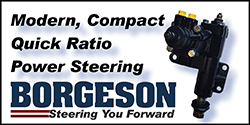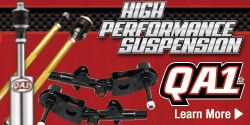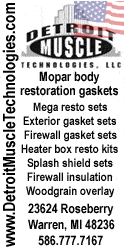Oh yeah. The Charger is the only classic that I have driven there. This will be the 7th time in the car.

There will be a group of us going in a caravan.
I’ve driven solo and been a little nervous about the risk of breakdowns but in all the years, I’ve only had the RH tailpipe hanger bracket break.
Last year a friend puked an alternator just as we exited the 405 in Van Nuys.
There will be a group of us going in a caravan.
I’ve driven solo and been a little nervous about the risk of breakdowns but in all the years, I’ve only had the RH tailpipe hanger bracket break.
Last year a friend puked an alternator just as we exited the 405 in Van Nuys.
















